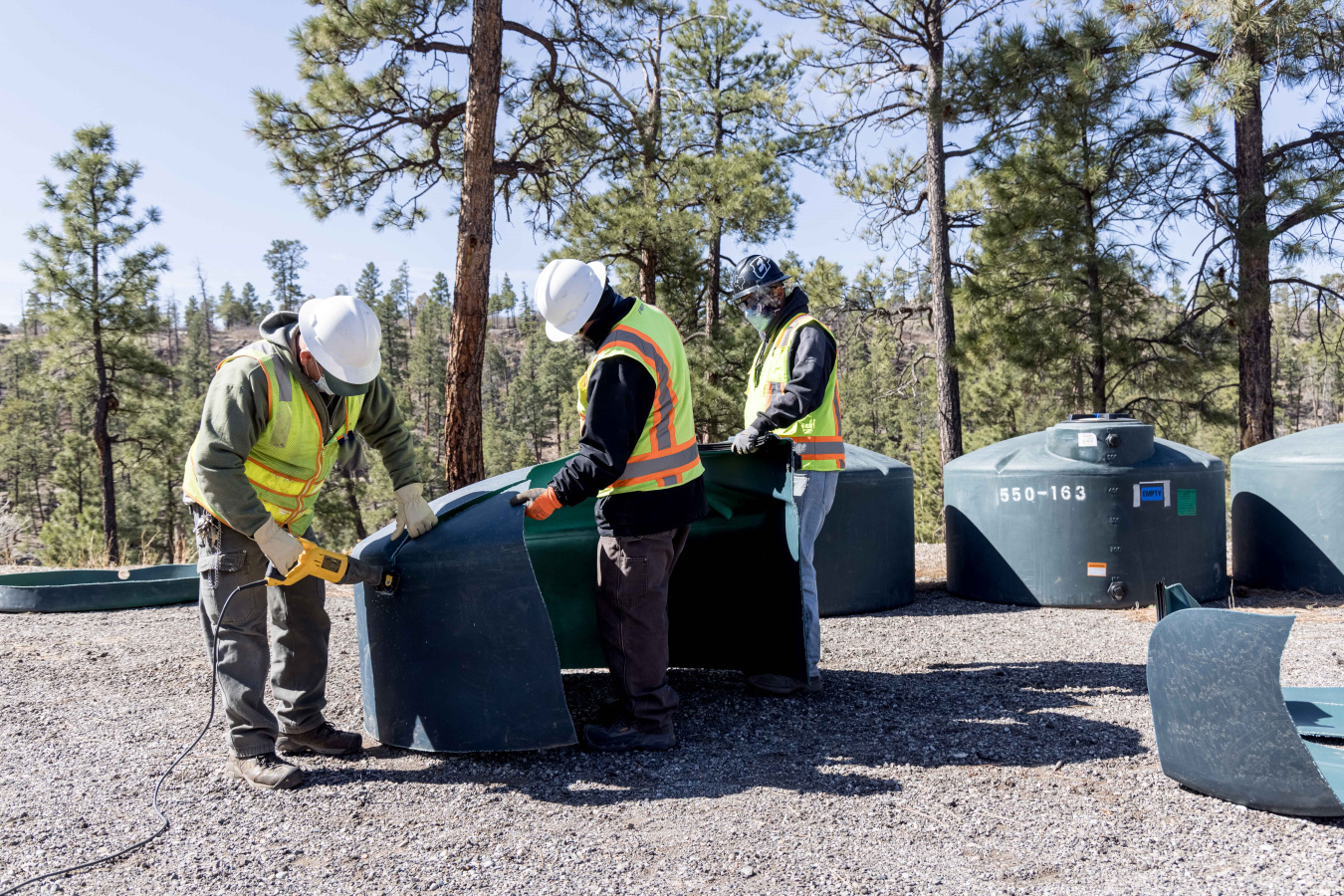
LOS ALAMOS, N.M. – The EM Los Alamos Field Office (EM-LA) and its cleanup contractor recently launched a new recycling initiative that diverted nearly 5 tons of plastic from a local landfill in April, sending it instead to the Los Alamos County Eco Station for reuse and saving an estimated $16,000 in taxpayer dollars.
Newport News Nuclear BWXT Los Alamos (N3B) cleans up hazardous and radiological waste generated at Los Alamos National Laboratory (LANL) during the Manhattan Project and Cold War eras for EM-LA.
The plastic came from about 80 tanks that stored purge water and drilling fluids from groundwater monitoring wells that assist N3B in monitoring area groundwater.
The process of purging, or removing water from wells, occurs immediately before sampling, and ensures samples represent water quality in the aquifer, rather than stagnant water that may have sat inside the well.
Until recently, plastic storage tanks that had reached their 10-year shelf life, or those with weak spots at risk of breaching, had gone as industrial waste to a landfill in Rio Rancho, about 90 miles away.
“We thought, ‘This isn’t right. It’s plastic. We should be able to recycle it,’” said Zoe Duran, N3B’s groundwater monitoring project manager. “In shipping to the Los Alamos County Eco Station, we’re saving taxpayer money in both transport and disposal costs.”
Before disposition at the recycling location, N3B crews reviewed the analytical profiles of water stored in each tank and ensured they met acceptance criteria. They also cut the tanks into smaller pieces to meet processing plant requirements.
The bottom portion of the storage tanks, where sediment typically collects, will be characterized to determine the best pathway — recycling at the station or shipment to a waste facility.
N3B has 128 additional plastic storage tanks flagged for recycling at the station. In the future, tanks that expire or show early signs of wear and tear will also be recycled.
The type of plastic being reprocessed — a high-density polyethylene — is commonly used to make milk containers and shampoo bottles, among other products.
“This initiative really is a no-brainer,” Duran said. “Not only does it save money, it’s simply the right thing to do. Our job at N3B is to clean up the environment. It’s important to complete that work as sustainably as possible.”
To receive the latest news and updates about the Office of Environmental Management, submit your e-mail address.
